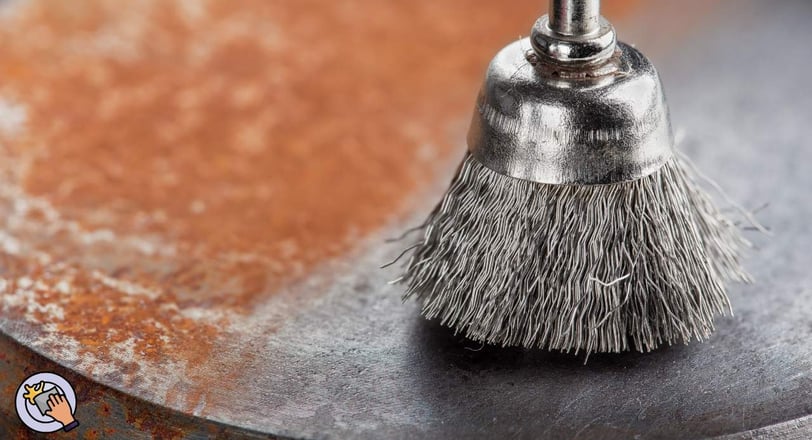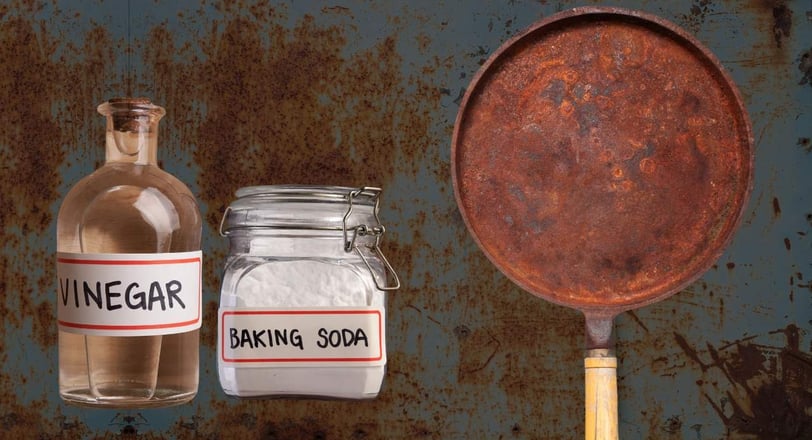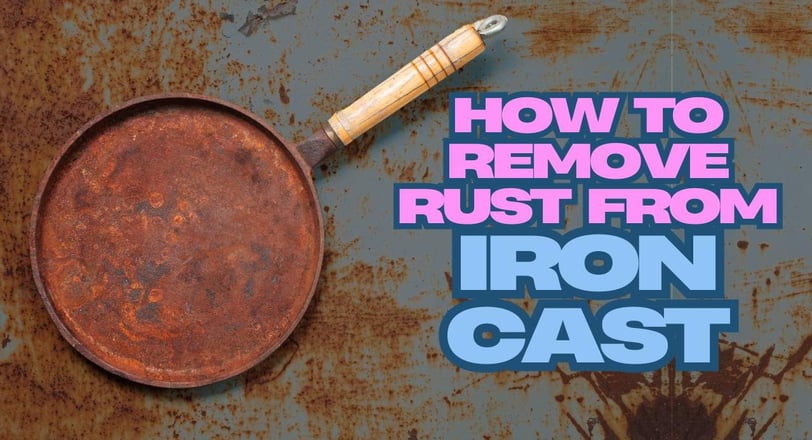How to Remove Rust from Cast Iron
If you love cooking with cast iron or using cast iron tools, you’ve probably come across rust at some point. It’s frustrating, right? But the good news is that rust doesn’t mean the end of your cast iron. It’s super easy to bring it back to life with just a little effort. Whether it’s a pan, a pot, a grill grate, or even an old stove, I’ll walk you through everything you need to know to clean it up and keep it rust-free for good.
Why Does Cast Iron Rust?
Rust happens when your cast iron meets moisture and air—it’s just science. If your cast iron isn’t properly dried, stored in a damp spot, or if the seasoning wears off, rust can show up pretty quickly. But don’t stress! You can clean it off and prevent it from happening again if you follow a few easy steps.
Tools and Supplies You’ll Need
Here’s a quick list of what you’ll need to clean up rust:
Steel Wool or a Scrub Brush: These are great for scrubbing off rust.
Dish Soap: You’ll need it to clean the cast iron before and after removing the rust.
Baking Soda: This is a super simple and natural way to deal with rust.
White Vinegar: Perfect for tough rust that doesn’t come off easily.
Cloth or Paper Towels: For drying your cast iron completely after cleaning.
Seasoning Oil: This is key for re-seasoning and protecting the surface after cleaning.
If you’re working on something bigger like a grill grate or a cast iron stove, a wire brush can come in handy. And trust me, grab some rubber gloves—they’ll save your hands when you’re scrubbing for a while.
How to Remove Rust from Cast Iron Cookware


How to Remove Rust from a Cast Iron Pot
If your cast iron pot has rust, don’t worry—you don’t need to throw it out. Start by giving it a good scrub with steel wool or a stiff brush to break up the rust. Use warm, soapy water to help loosen any stuck-on bits, and rinse it well. If some rust is still hanging on, sprinkle a little baking soda on the rusty spots, add a bit of water to make a paste, and scrub again. Once it’s clean, dry the pot completely so moisture doesn’t cause the rust to come back.
How to Remove Rust from a Cast Iron Pan
Rust on your favorite pan? It’s not a big deal. Start by scraping off any leftover food with a nylon scraper or a brush. Next, mix some baking soda with water to make a paste and scrub the rusty areas. If the rust is being stubborn, soak the pan in a mix of vinegar and water (equal parts) for about an hour. After that, give it another scrub, rinse it thoroughly, and dry it immediately. Once it’s clean, re-season it to bring back its natural non-stick surface.
How to Remove Rust from Cast Iron Grill Grates
Rusty grill grates can ruin your food and your grill’s vibe. Here’s what to do: Heat up the grill first to burn off any leftover food and loosen the rust. Once it’s cooled down a bit, scrub the grates with a wire brush. For tougher spots, mix baking soda and water into a paste, rub it on, and scrub again. Rinse the grates well, then coat them lightly with oil to prevent more rust.
How to Remove Rust from a Cast Iron Stove
Cleaning a rusty cast iron stove takes a little patience, but it’s worth it. Start by brushing off loose rust with a wire brush. For tougher rust, apply vinegar directly to the problem spots and scrub it off. If it’s an antique stove, be gentle—you don’t want to damage its original finish. Once the stove is clean, dry it thoroughly and apply a thin layer of heat-resistant oil to protect it.


How to Remove Rust from Cast Iron with Baking Soda
Baking soda is such a simple and effective rust remover. Here’s how to use it:
〰 Sprinkle baking soda directly onto the rust.
〰 Add a little water to make a paste.
〰 Scrub the area with a brush or sponge.
〰 Rinse with warm water and repeat if needed.
This works best for light to moderate rust and is a safe, non-toxic option—perfect for cookware.
Does Vinegar Remove Rust?
Yes, vinegar is awesome at removing rust. Its acidity breaks down the rust, making it easy to scrub off. Here’s how to use it:
〰 Mix equal parts vinegar and water in a container.
〰 Soak your cast iron in the solution for 1–3 hours (depending on how bad the rust is).
〰 Take it out, scrub the rust off, and rinse well.
〰 Dry it immediately.
Just don’t soak it for too long—vinegar is powerful and can damage the metal if left for hours and hours.
How to Remove Rust from Cast Iron Without Vinegar
If you’re out of vinegar or just don’t want to use it, no problem! There are other ways to remove rust:
〰 Baking Soda Paste: Just like I mentioned earlier, it’s a great alternative to vinegar.
〰 Potato and Baking Soda: Sounds weird, but it works! Cut a potato in half, dip it in baking soda, and scrub the rusty spots. The potato’s natural acid helps lift the rust.
〰 Salt Scrubbing: Sprinkle some coarse salt over the surface and scrub with a damp cloth or sponge.
〰 Commercial Rust Removers: There are products made specifically for cast iron. Just double-check that they’re food-safe if you’re using them on cookware.
How to Maintain Cast Iron After Rust Removal
Once your cast iron is clean, let’s make sure it stays that way. Here’s how:
〰 Seasoning: Rub a very light coat of oil (vegetable oil or flaxseed oil works great) all over the surface. Bake it at 350°F for about an hour. This creates a protective layer that keeps rust away and makes the cookware non-stick.
〰 Drying: Never let your cast iron air dry. Use a towel to dry it right away, and for extra peace of mind, pop it on the stove for a couple of minutes to get rid of any leftover moisture.
〰 Storage: Store it in a dry spot. If you stack your cast iron, place a paper towel or cloth between pieces to avoid scratching and trapping moisture.
Common Mistakes to Avoid
Here are a few things to watch out for so you don’t accidentally damage your cast iron:
〰 Over-Scrubbing: Don’t go too hard when scrubbing. You might remove the seasoning, which makes the cast iron more likely to rust. Use gentle tools like a nylon brush or steel wool.
〰 Using Harsh Chemicals: Stick with natural solutions like baking soda, salt, or vinegar. Avoid strong chemical cleaners—they can ruin your cookware.
〰 Not Drying Properly: Moisture is the enemy. Always dry your cast iron thoroughly, no matter what.
Your Go-To Guide For:
Cast Iron vs Stainless Steel: Which Is Better? ↗
For More Articles: KoolKitchen.pk ↗




